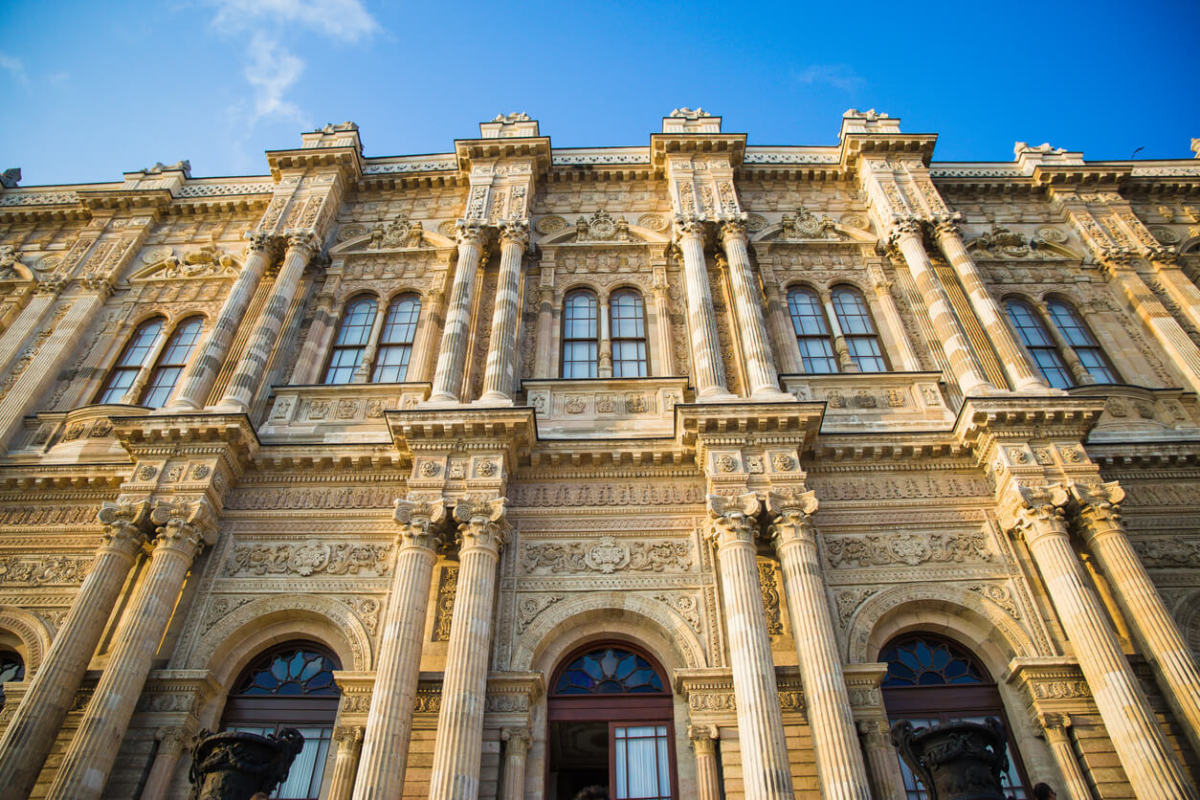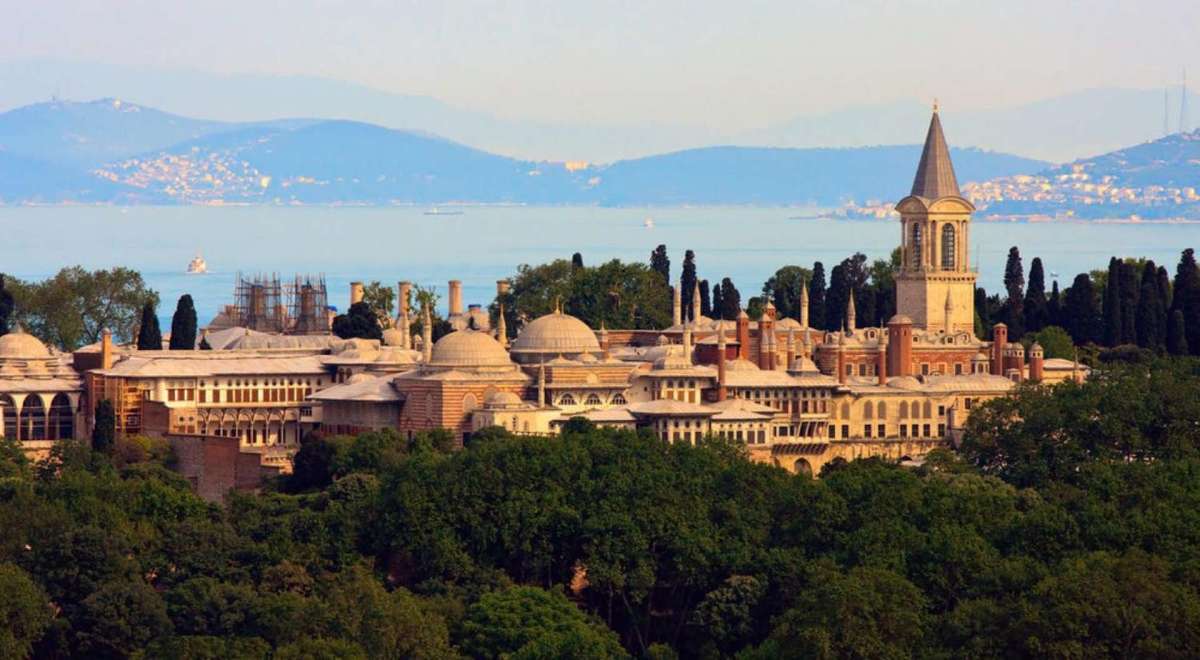- HubPages»
- Travel and Places»
- Visiting Asia»
- Western Asia
The Basilica Cistern of Istanbul
The Basilica Cistern of Istanbul
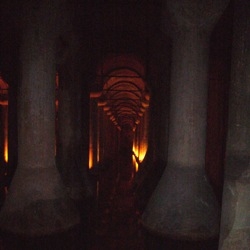

Yerebatan Sarnici, the Sunken Palace of Istanbul
The Basilica Cistern is the largest of hundreds of ancient water cisterns that were built beneath the city of Istanbul, Turkey. In the Turkish language, the Basilica Cistern is called either Yarebatan Sarnici which translates to the "sunken cistern" or sometimes as Yarebatan Sarayi which translates to "sunken palace".
The Basilica Cistern was built sometime between 527 to 565 AD during the reign of the Byzantine emperor Justinian I. Ancient documents indicate that over 7000 slaves were used to build the cistern and several hundred of them lost their lives during its construction. The water that filled the cistern was carried by an 9 mile (15km) aquaduct from the Belgrade Forest and it served the water needs of the Great Palace of Constantinople and the other buildings in the area.
As you can see from these photos I took on a visit to the Basilica Cistern, it certainly does resemble a palace or cathedral and is a popular tourist attraction, amazing visitors with the beauty and design that has endured for so many centuries.
All photos by the author, Vicki Green, unless credited otherwise.
Finding the Basilica Cistern in Istanbul
The entrance to the Basilica Cistern is in a rather non-descript building a short distance from the Hagia Sophia in the Sultanahmed area of Istanbul.
Descending the Stairs to the Yerebatan Sarayi
After purchasing admission from the ticket window inside a non-descript building at the street level, the way to the cistern leads down a stairwell with several turns. Finally a view through an arch offers the first glimpse of the dim underground world of the Basilica Cistern.
The Dark World of the Sunken Palace
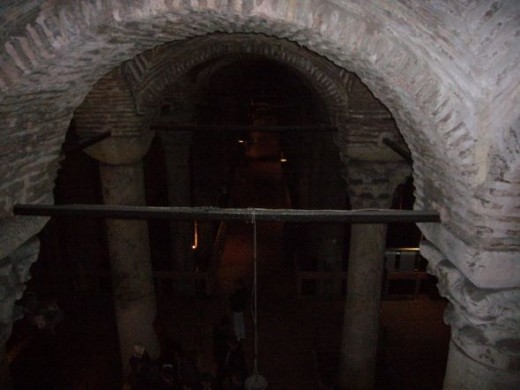
The Columns of the Basilica Cistern
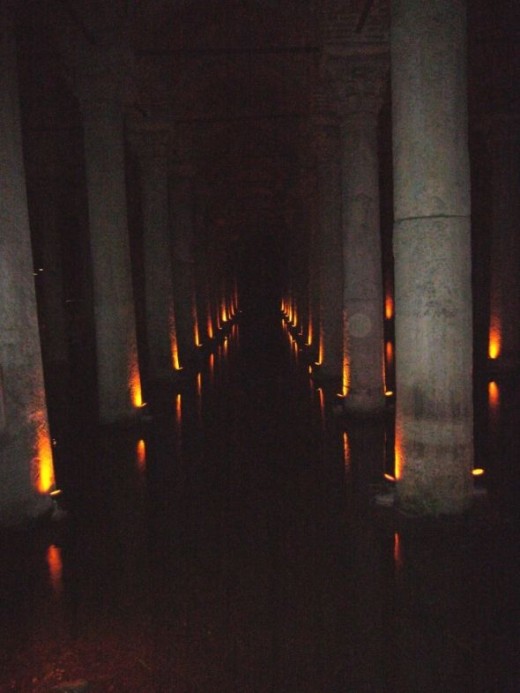
How Big are the Basilica Cisterns?
After descending a total of 52 stairs, finally the entrance is reached and the full size of the Yerebatan Sarayi can be seen. Three hundred thirty three columns made from marble and granite support the 30 foot (9 meters) high domed ceiling. There are 12 rows of columns with 28 columns in each row. Since the columns were made in several different styles, it is thought by historians that some were recycled from ruins and other buildings. Most are fairly plain, but a few are engraved with some interesting designs.
The interior walls are made from firebricks 13 feet thick and covered with a waterproof mortar and if full, the cistern has a capacity of 21,133,764 gallons (80,000 cubic meters) of water.
At one time, to see the Basilica Cistern required a trip in a boat, but after renovations were completed in 1987, walkways are now used to walk among the columns over the water.
Fish Living Underground in the Basilica Cistern
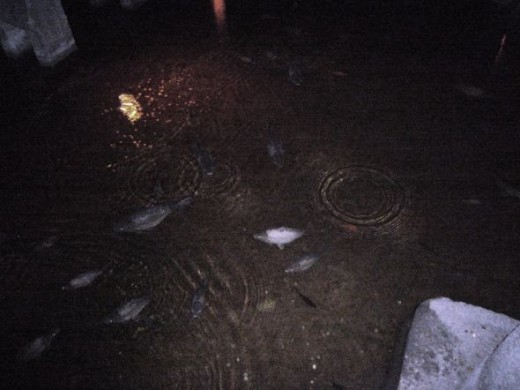
Rediscovering the Lost Istanbul Cisterns
According to the information on signs displayed in the Basilica Cistern, at some point it stopped being used as part of the water system of Istanbul and knowledge of its existence was forgotten. It was rediscovered after being "lost" because of the fish that live there. A historian heard stories of people catching fish by dangling a line through trapdoors in the floors of their homes and decided to investigate and rediscovered the sunken palace.
The Columns of the Basilica Cistern
Three-hundred-thirty-six massive columns hold up the ceiling of the Basilica Cistern. They are believed to have been recycled from other Roman buildings. There are several different designs some of which are unique and one-of-kind. The "Peacock Column" is one of the more interesting and is so named because of its engravings that resemble peacock feathers.
Unique and Unusual Columns of the Basilica Cistern
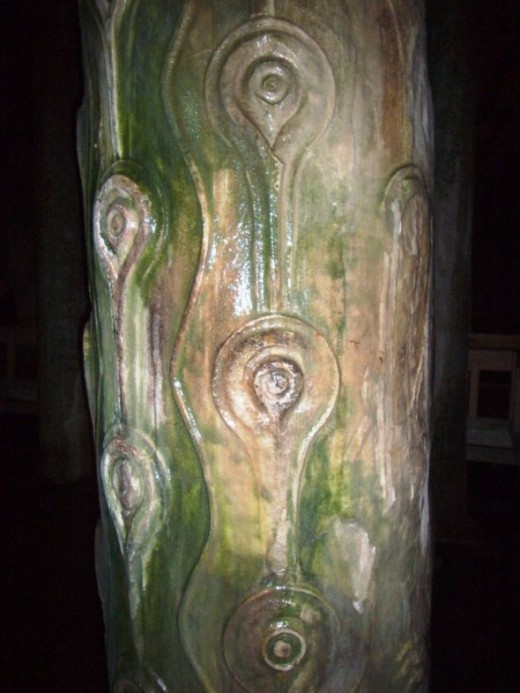
The Medusa Head Columns
Two of the most interesting columns in the Basilica Cistern are the pair that have a base that have a carved sculpture of the head of Medusa. No one knows where they came from or why they were placed in the cistern, or why one is positioned with the Medusa head laid on its side. Another nearby column also has a base with a sculpture of the head of Medusa, but it is placed with the head upside down. The origins of these Medusa head and why they were placed in these unusual positions is another mystery of the Basilica Cistern.
The Sideways Medusa Head Column

Upside Down Medusa Head Column Base
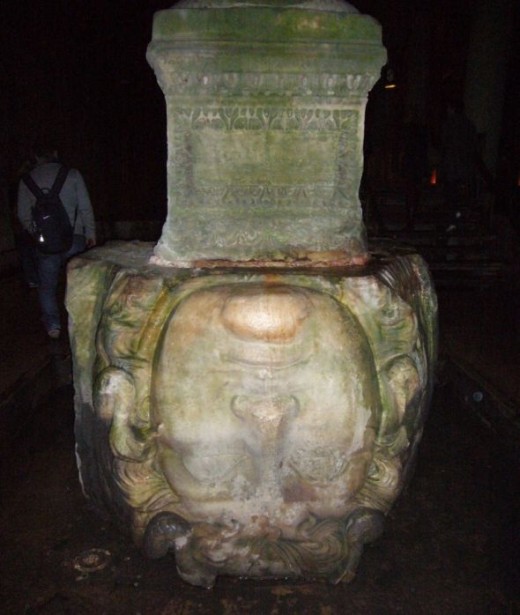
A Video Tour of the Basilica Cistern
Planning a Trip to Istanbul, Turkey?
The mix of cultures and religions and the long amazing history makes Istanbul a fascinating city to to visit. It was the capital of both the Roman and Ottoman empires and is where the continents of Europe and Asia meet. For those who can only spare a few days for a visit, I recommend finding a hotel in the Sultanahmet area of Istanbul within walking distance of many of the popular attractions including the Blue Mosque, Hagia Sophia, the Hippodrome, Topkaki Palace, Grand Bazaar and Basilica Cisterns.
© 2013 Vicki Green


